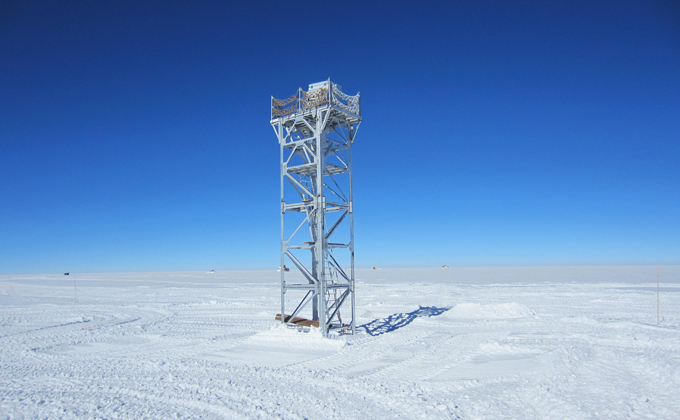If we built a telescope on top of a tower in Antarctica, we would see things that astronomers never dreamed of

An astronomical observatory in Antarctica could use the cleanest night sky on Earth.
If you built an optical telescope on top of a ten-meter tower in the center of the Polar Plateau, it could observe space objects twice as small as those usually seen in other observatories. The Antarctic Observatory could boast such sharpness due to the fact that it would protrude above the so-called planetary boundary layer, the lowest part of the atmosphere that is directly influenced by the planet's surface. It is this layer that is responsible for the waving of the air that blurs most images taken with ground-based telescopes.
The thickness of the boundary layer varies depending on where you are on Earth. Near the equator, it can be several hundred meters thick, limiting the sharpness of the largest ground-based telescopes, such as those in the Canary Islands and Hawaii. For this reason, these telescopes cannot separate objects smaller than 0.6 to 0.8 seconds of arc, which is less than the thickness of a human hair seen from 20 meters.
In Antarctica, the boundary layer is really thin, so you could just place such a telescope over it, says Bin Ma, an astronomer at the Chinese Academy of Sciences in Beijing.

Ma and his colleagues made the first-ever measurements of atmospheric disturbances at the highest point of East Antarctica, the so-called Domes A. From April to August 2019, instruments installed on the 8-meter tower at the Chinese research station Kunlun studied how atmospheric turbulence disturbed star radiation. A nearby weather station monitored weather conditions, such as temperature and wind speed. From these observations, researchers described the boundary layer on the Dome A ice dome and its effect on observations made with telescopes.
The boundary layer was only about 14 meters thick. Therefore, the sensors installed at the top of the eight-meter tower did not register atmospheric disturbances for only 1/3 of the time. However, when the instruments were above the boundary layer, the influence of the atmosphere was so small that the telescope was able to perceive details as large as 0.31 arc seconds. It is worth noting that under the best weather conditions, the telescope was able to see details as small as 0.13 arc seconds.
One-tenth of an arc second is extremely good. In Chile or at the Mauna Kea summit, we rarely have, 'says Marc Sarazin, a physicist at the European Southern Observatory in Munich.
Scientists discovered equally good weather conditions above the boundary layer at the top of Dome C in Antarctica. However, the boundary layer there is about 30 meters thick, which makes it more difficult to observe from above. The planned optical telescope on the 15-meter tower at the Kunlun station will be able to take advantage of the amazing conditions of Dome A. The exceptional weather conditions there will allow astronomers to study many celestial bodies, both in the Solar System and in distant galaxies.
Don't miss out on new texts. Follow Spider's Web on Google News .
If we built a telescope on top of a tower in Antarctica, we would see things that astronomers never dreamed of

Comments
Post a Comment